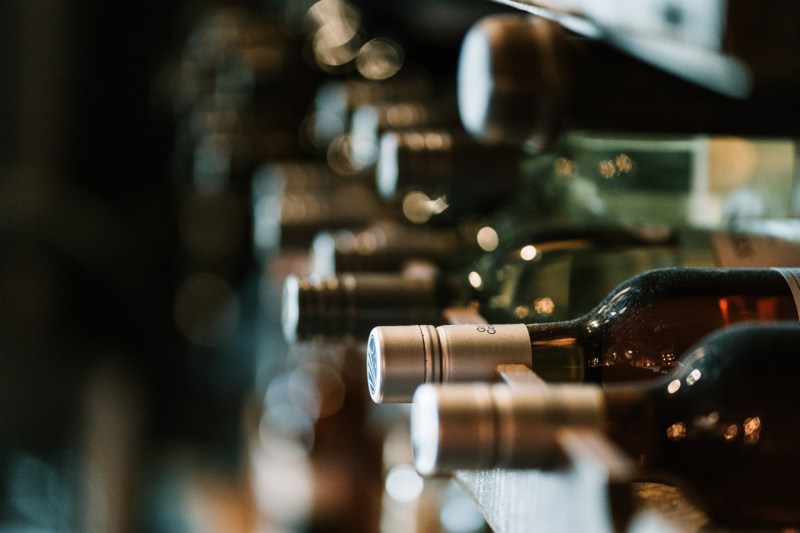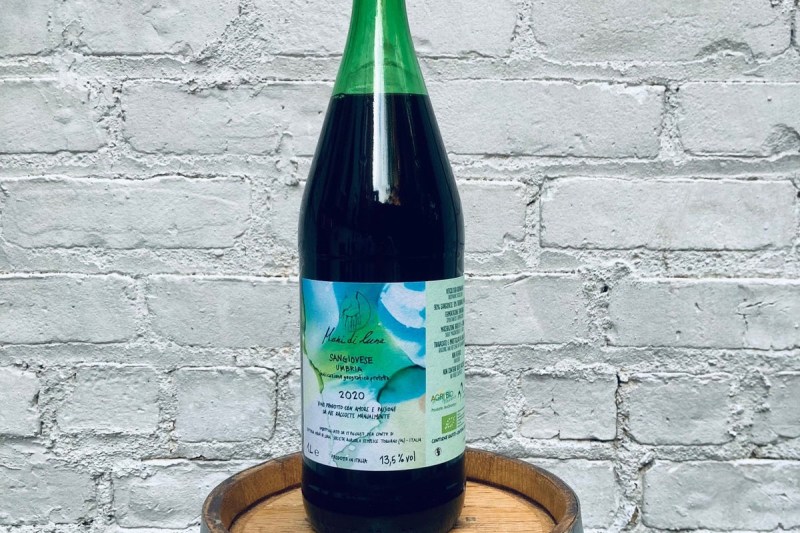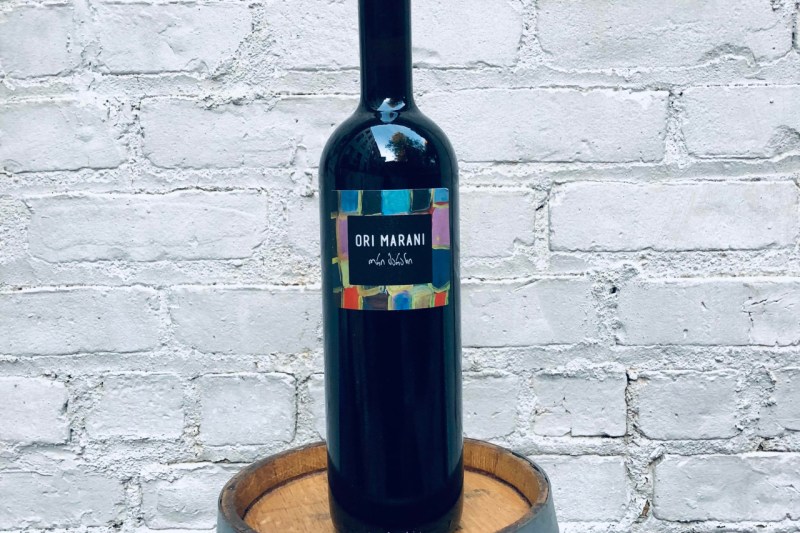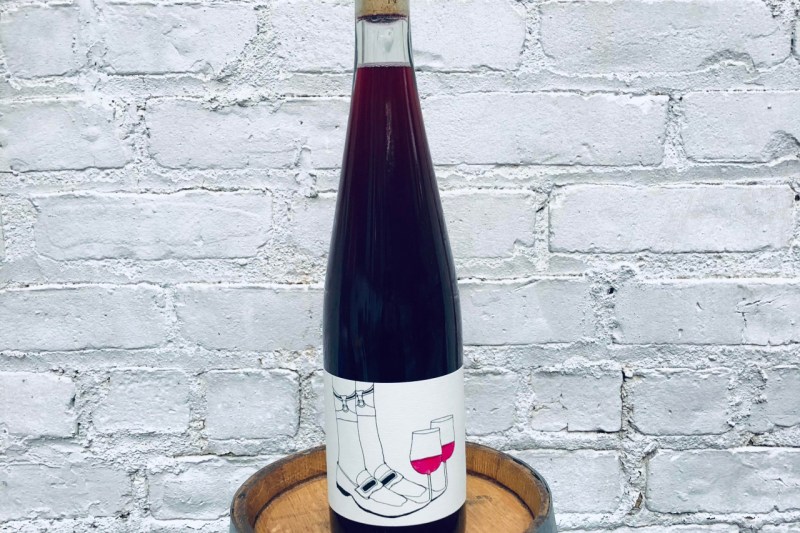
For many people, choosing a great wine can be a complex process. A good wine shop will have a seemingly endless number of choices, making it tough for a customer to decide without expert help. After all, a description on a wine bottle can only do so much in terms of capturing the true essence of a wine. For the best results and satisfaction, there’s nothing like curated suggestions from a wine professional.
Sarah Favinger, a wine buyer at Smith & Vine, is the perfect expert for this task. Located in Brooklyn, New York, Smith & Vine is a unique wine shop that focuses on women-led wines and small production wineries. The following list are some of Favinger’s favorite wines that you need to be trying right now.
Sangiovese from Umbria, Italy

Most people looking for a great bottle of Italian wine tend to gravitate toward a bottle of the well-known Tuscan Chianti. But Favinger has a different suggestion. “We’ve been clamoring for Sangiovese made a little further south in the region of Umbria. Aromas of dark cherry, blackberry, and fresh-cut herbs pair with an easy, delicious palate with notes of cherry blend with gentle tannins and great acidity,” said Favinger. A favorite weeknight table wine throughout central Italy, Favinger’s current favorites include Mani Di Luna ‘Rosso Sangiovese IGT,’ Umbria, Italy 2020 and the Dinamo ‘Nucleo 1 Rosso,’ Umbria, Italy 2020.
Saperavi from Georgia

A small country sandwiched between Turkey and Russia, Georgia is one of the oldest grape-growing regions in the world. Georgia is famous for their Saperavi grapes, which produces wines ranging from pink and bubbly to dark and red. “We love it in all its forms, and its frequently made with minimal intervention and organic grapes as the natural wine movement is very popular in Georgia,” said Favinger. “The inky, full-bodied version has jammy fruit with chewier tannins and is dark enough to stain your teeth. We think it would be excellent with braised beef or steaks.”
For lighter Georgian wines, Favinger describes them as “chillable with a smoky nose and notes of wild strawberry or a brambly berry blend with very little tannins — these could be enjoyed on their own or with a tapas-style snack.” Favinger’s current favorites include Ori Marani ‘Nita,’ Katli, Georgia 2019 (lighter style) and Andria Gvino ‘Saperavi Khashmi,’ Kakheti, Georgia 2019 (fuller style).
Chasselas/Gutedel from France, Germany, or Switzerland

This lesser-known, white grape varietal has different names depending on where it’s grown. Its flavors are wide-ranging, veering from “light, soft, round, with lovely orchard fruit notes like apple and pear” to a gentle spice accented with hints of cloves or cinnamon. This wine has an excellent silky texture with nutty notes that’s great paired with cream-based sauces or raclette cheese.
“This wine is the perfect example of drinking a wine local to the food you’re pairing it with — we can envision sipping this in a chalet in the shadow of the Alps with fondue, bread & a hearty charcuterie board on a cold winter day,” said Favinger. Because its not extremely well-known, Favinger considers the Chasselas/Gutedel as one of the great “bang for your buck” bottles. Some of her favorites include: Gertie & Max ‘Gutedel,’ Markgraflerland, Germany 2020 and Serge Dagueneau et Filles ‘La Centenaire,’ Pouilly-Sur-Loire, France 2020.
Müller-Thurgau from Germany

Created by crossing Riesling with Madeleine Royale, this varietal is incredibly popular in Germany for both white and skin-contact (orange) wines. These wines are dry and crisp with the aromatics of stone fruit and citrus zest. Because they’re generally low in acidity, they are excellent for blending.
“These white wines are easy to drink and can sometimes have a slight spritz. So when paired with the light fruity notes and crispness, these can be great wines for parties with a variety of foods, drinking solo, or with a cheeseboard,” said Favinger. “The wines with skin-contact are textural without being too grippy with tannins and lean more into notes of apricot, dried fruit, white flowers, candied citrus peel, and baking spices.” To try them for yourself, Favinger suggests: Weingut Schlossmuhlenhof | ‘Müller-Thurgau Boden Funk,’ Rheinhessen, Germany 2020 (white) and Weingut Schmitt | ‘Müller-Thurgau,’ Rheinhessen, Germany 2020 (skin-contact).
Sparking Vouvray from Loire Valley, France

For a great, year-round sparkling wine that isn’t champagne, Favinger advises the Vouvray. Made with Chenin Blanc, these sparkling wines are produced in the same method as Champagne but are far less expensive.
“They can range from dry to sweet, but even the dry wines have lovely fresh fruit and floral aromas and flavors, such as pear, apple, & honeysuckle,” said Favinger. “There can also be notes of honey or ginger and the still versions can have a lovely unctuous texture. We love Vouvray bubbles for a toast, celebrations, or a pre-dinner bubbly. Sparkling Vouvray with sushi is also a classic pairing.” Favinger favorite is Champalou ‘Vouvray Brut,’ Vouvray, Loire Valley, France NV.
Valdiguié from California

This lesser-known grape varietal was originally used in the Languedoc-Roussillon region of France but has since been neglected in the area. Instead, the grape has seen a recent revival in California, becoming a favorite of minimal intervention wine producers such Broc Cellars, Folk Machine, and Las Jaras. The wine has purple & pink floral aromas heightened with the flavors of cherry, blackberry, pomegranate, and a hint of cloves. This is a great wine to enjoy by itself or paired with an herbaceous pork roast or a perfectly roasted chicken.
“It’s often compared to Gamay (some farmers thought old Valdiguié vines in California were Gamay vines for decades) and we see the similarities, they are both fresh, exciting, and food-friendly wines,” said Favinger. To try, Favinger suggests Hobo Wine Co. – Folk Machine ‘Film & Camera,’ Redwood Valley, California, United States 2019 and Las Jaras ‘Slipper Sippers Nouveau,’ Mendocino, California, United States 2021.



